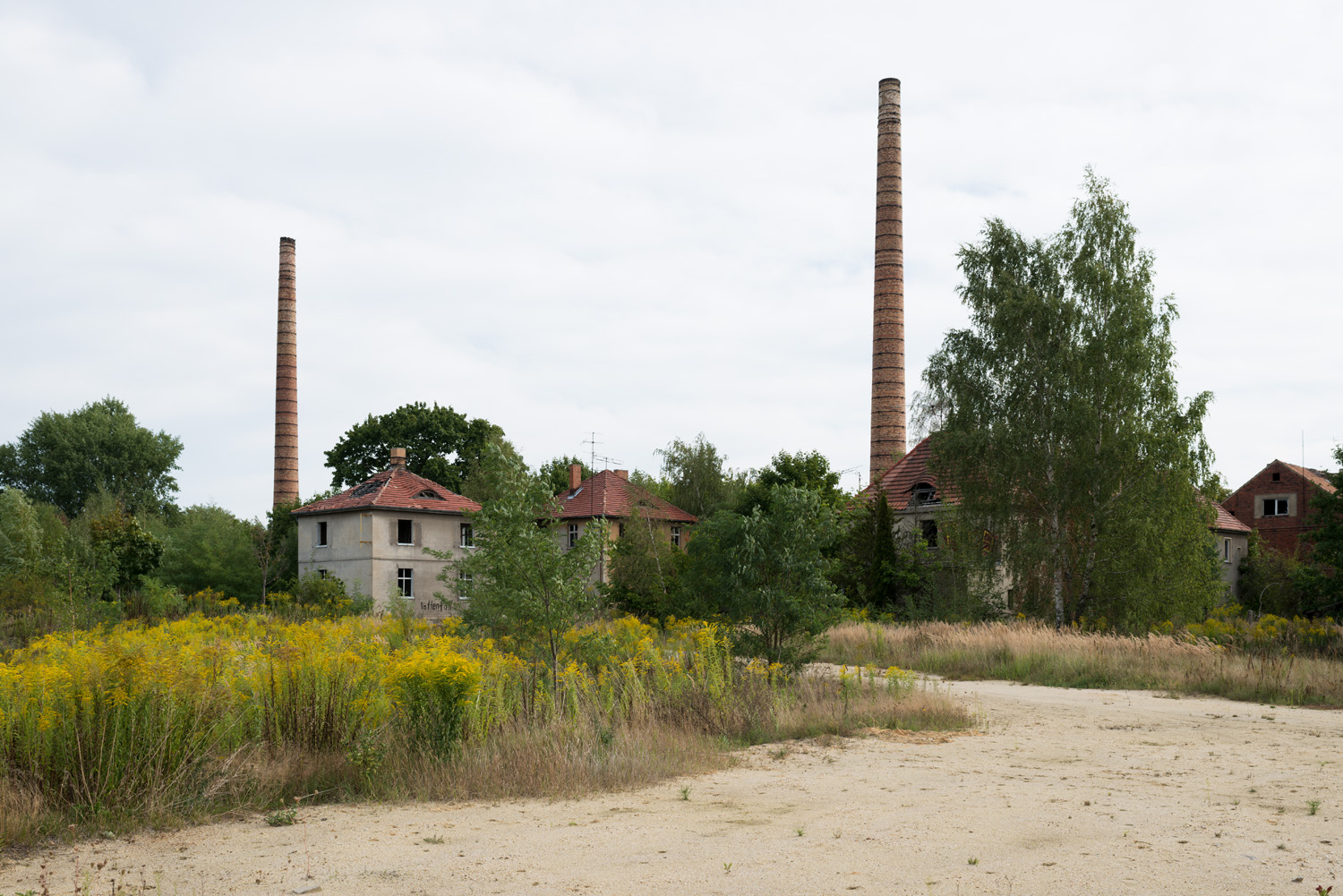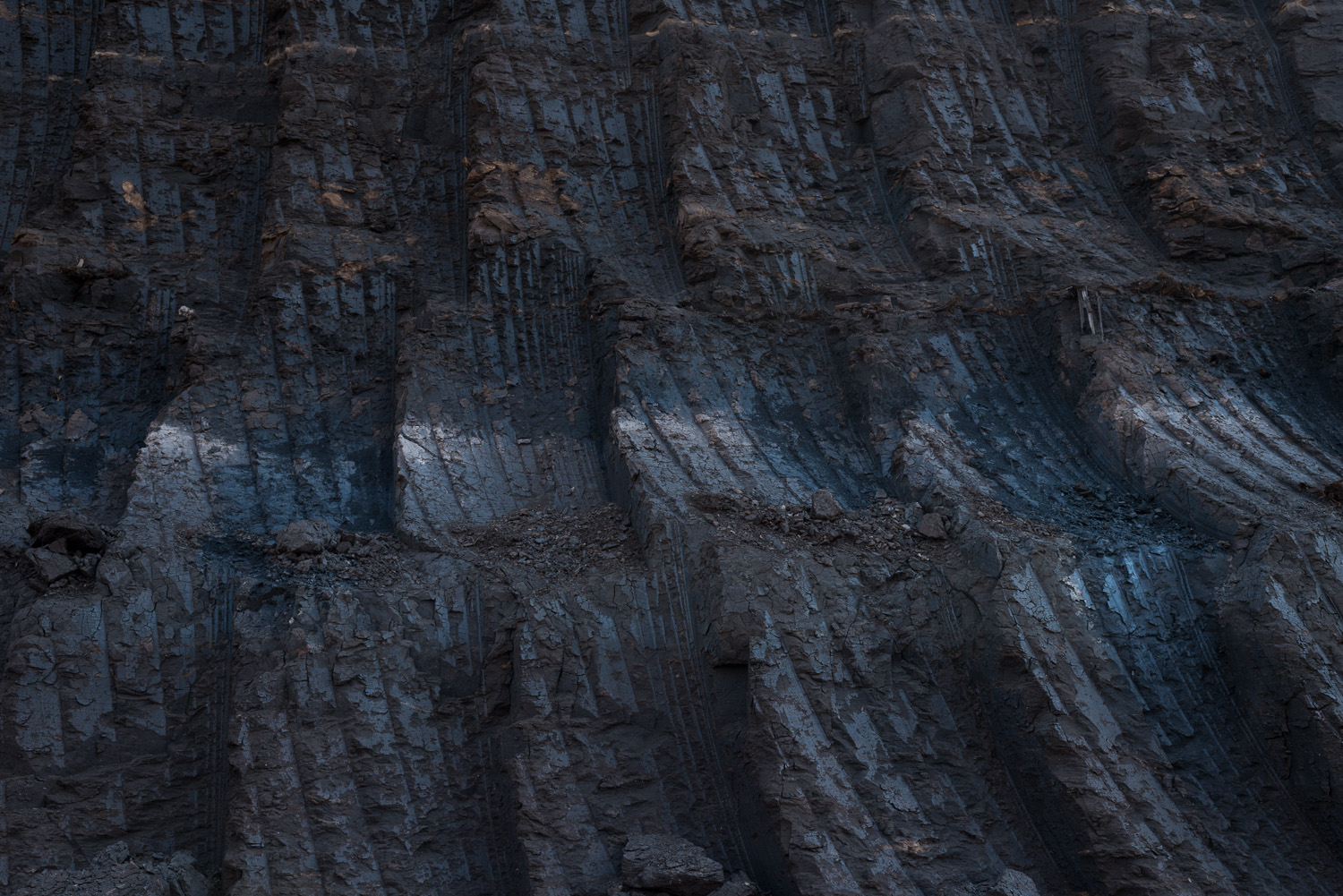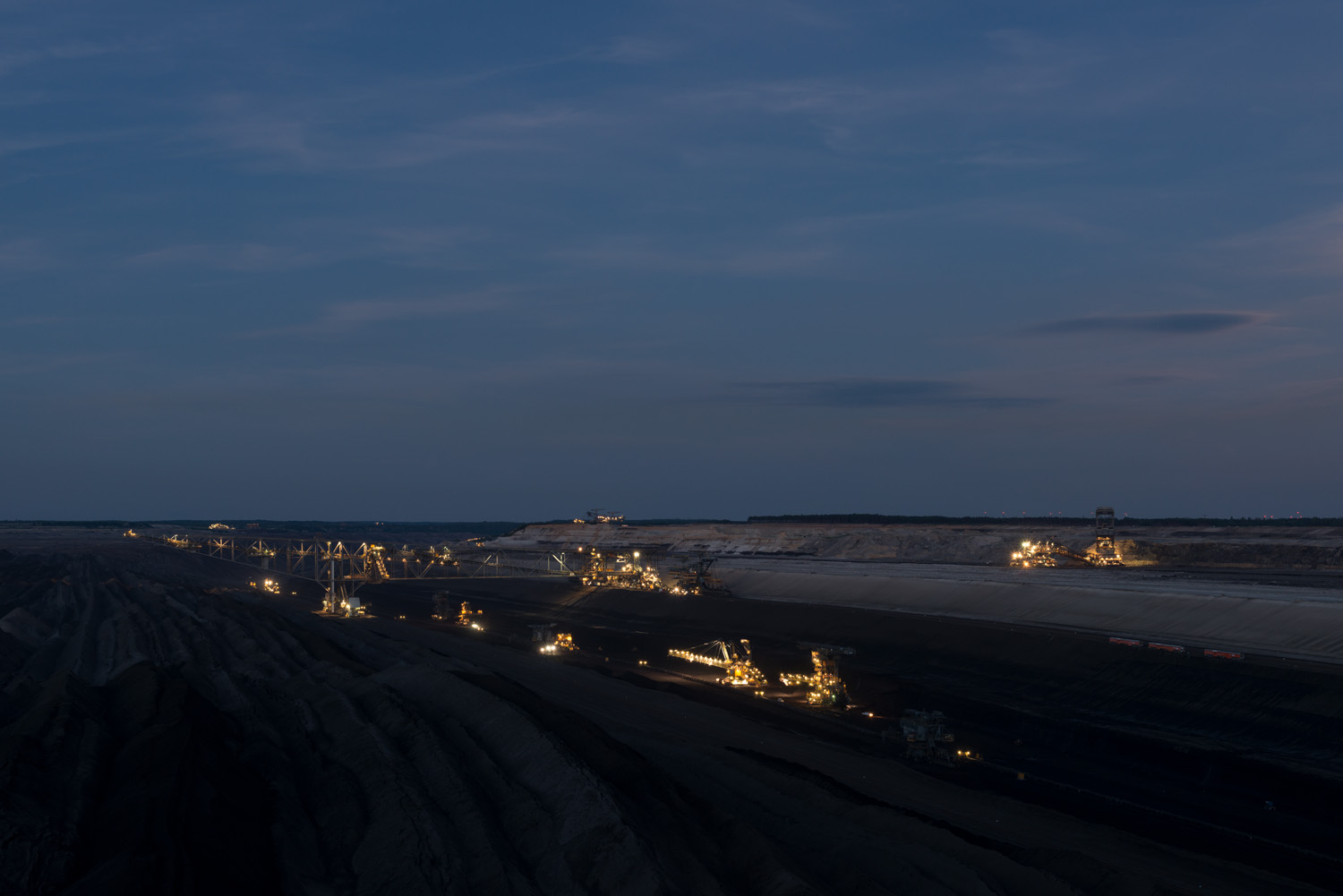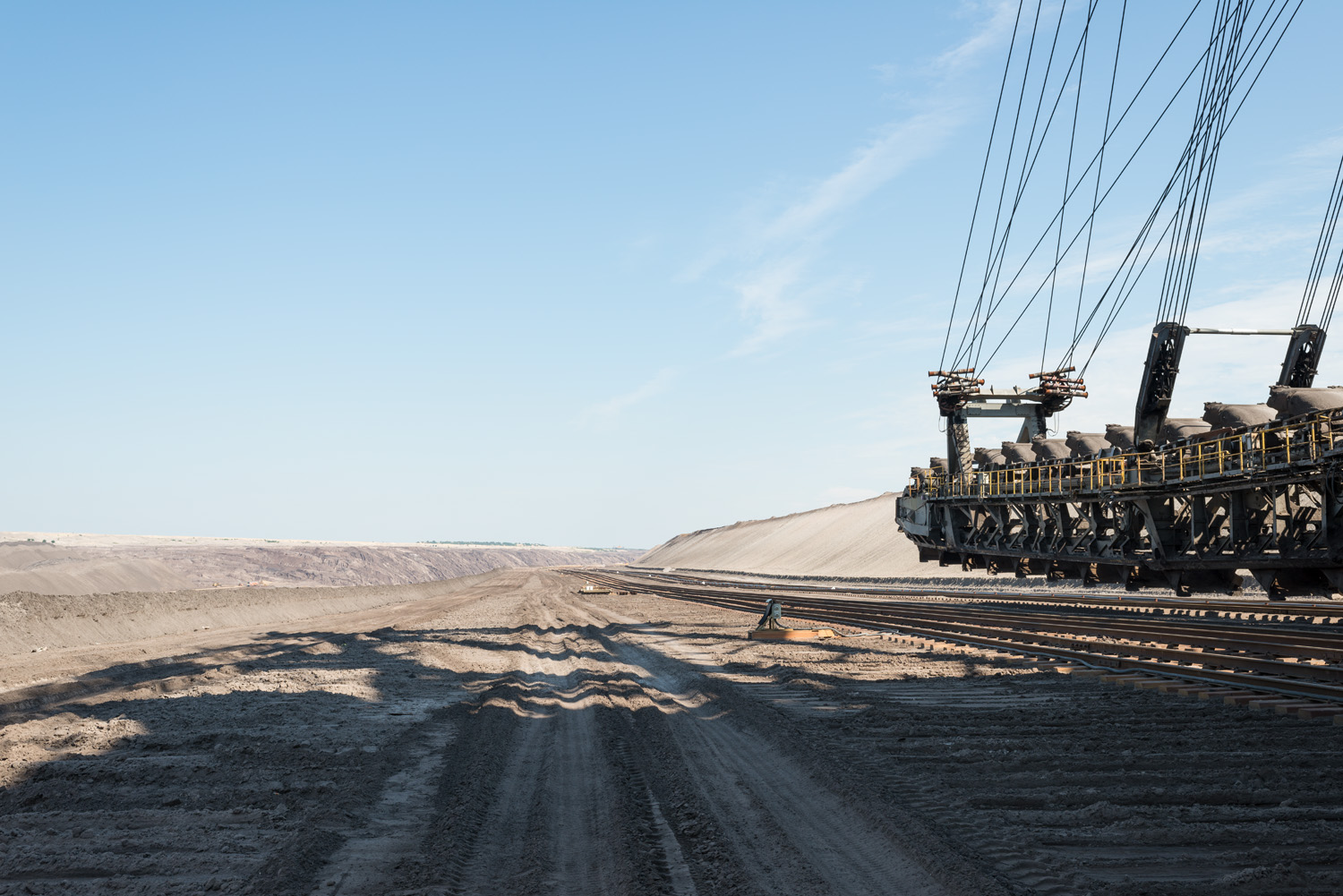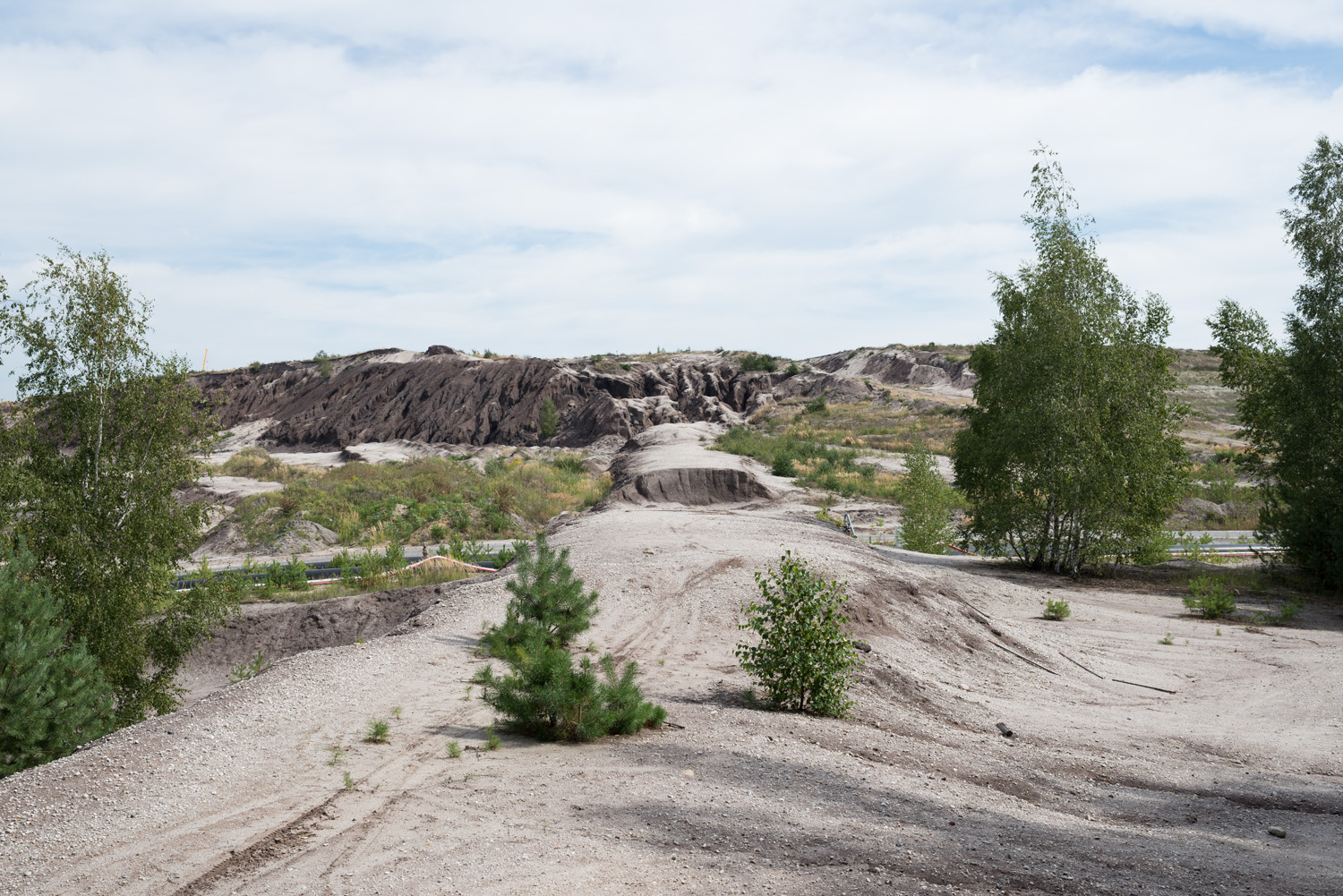/LAUSITZER BRAUNKOHLEREVIER 2015
LUSATIAN LIGNITE MINING DISTRICT / 2015"God created Lusatia, but the devil buried the coal beneath it." – Lusatian proverb
Formed around 15–20 million years ago, the coal seam of the Lusatian lignite mining district lies at an average depth of 80 meters.
The progress brought on by 19th-century industrialization caused a steady increase in the demand for electricity – which meant that a new energy source needed to be developed. For over 100 years, coal has been dug up relentlessly, with the surface mining recklessly leaving visible traces across the landscape. Villages are devastated as a result of land degradation, with residents forced to give up their homes and relocate. All that remains are ruins at the edges of the mines – but only until the destructive machinery comes along and levels them out.
As groundwater is pumped out of the excavation sites, minerals from the subsoil come into contact with oxygen and begin to oxidize. As a result, iron and manganese oxides build up in the waters, causing damage to the ecosystem. The number of living beings in the rivers and streams has declined drastically since the inception of the strip mine.
Lignite is by far one of the most environmentally unfriendly of all fossil fuels and, due to its tremendous CO2 emissions, contributes to global warming. Despite the announced Energiewende (energy transition) and the promotion of renewable electricity, lignite continues to be used as a “bridging energy” in Germany. Even villages like the tradition-steeped Proschim, which generates green electricity for around 15,000 households using solar and wind power plants, are set to make way for strip mining.
Once the coal has been mined, all that remains is a devastated no-man’s-land encompassing several square kilometers; due to issues of structural stability, this area is then closed off to entry for decades.





